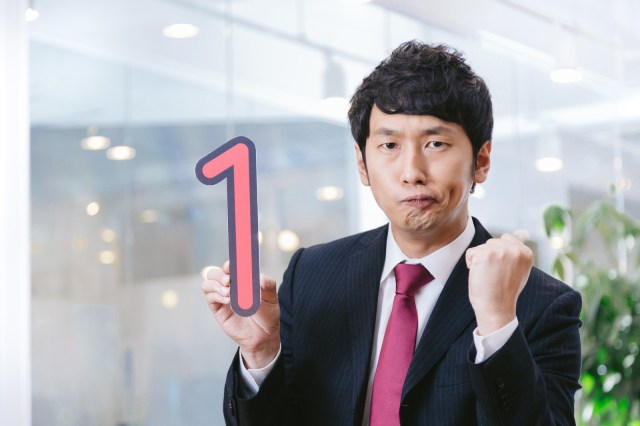
A non-profit study sought to determine the best Japanese prefecture to live in, but found interesting discrepancies.
Japan is an awesome place to live, with beautiful countryside scenery, delicious food, affordable healthcare, and plenty of convenience. But where’s the best place to live in Japan? Well, according to data collected by students and professors of the Graduate School of the University of Tokyo, the answer is Fukui Prefecture.
While this coastal prefecture in central Japan does have stunning landscapes, a cool moated government building, and a cat haven temple that is a dream for anyone, those aren’t exactly the things that matter when it comes to being “the best” place to live (except the cats, maybe). The researchers, who have founded a non-profit forum that researches concepts of “human security,” used 90 different indexes like average lifespan, employment, and interpersonal connection to determine the rankings, with the aim of scoping out issues that are holding Japan back.
Project team representative Yukio Takasu, who was once the United Nations Under-Secretary-General for Management, said the research team grouped various kinds of public data into indexes, which they then used to determine the rankings. Factors like average life span and healthy life expectancy were grouped into the “Life” index, while income, graduation rates, and school promotion rates were included in the “Lifestyle” index. The number of cases of bullying and levels of freedom of speech, among other things, made up the “Dignity” index.
Ranking at the top three of the “Life” index were Aichi Prefecture, Shiga Prefecture, and then Tokyo. In “Lifestyle”, Fukui took the top spot, followed by Toyama and Nagano. Finally, for Dignity, Tokyo was number one, with Nara and Shimane placing second and third. In total, Fukui came out on top, followed by Toyama, Nagano, Tokyo, and Ishikawa.
Ranking on the bottom, after averaging out all the factors, was Aomori prefecture in the far northern reaches of Japan. Okinawa, also in the far reaches, but to the south, was second-to-last, and then Miyagi, which was one of the prefectures devastated in the 2011 Great East Japan Earthquake and Tsunami.
The team also did an individual survey, in which respondents were asked to answer questions about their level of “Self-containment,” which included how satisfied they were with life, and their “Interpersonal connections,” whether they felt lonely and had people to talk to about their troubles. In “Self-containment,” the best rated prefectures were Kagoshima, Miyazaki, Nagasaki, Shimane, and Nara. In “Interpersonal connections”, they were Miyazaki, Ishikawa, Osaka, Kagoshima, and Yamagata.
That’s not surprising given that the majority of those prefectures–Kagoshima, Miyazaki, and Nagasaki–are in Kyushu, which was voted as the top place to live in the Japanese countryside. However, what is surprising is that Fukui, which the data ranked as the best place to live, was ranked as the worst in “Interpersonal connections”. Many respondents answered they are “painfully lonely”, and that they have “no one to confide in in times of trouble”.
Though every area of Tokyo is different, the city as a whole did fairly well on average, ranking as the fourth best place to live when all factors were combined. They did especially well on the points of “Dignity,” since there are a large number of lawyers and non-profit organizations in the big city. Additionally, people in the city generally tend to make more money and have more economic power, which generally leads people to have more satisfaction in their lives. However, Tokyo also suffered on “Interpersonal connections,” and has serious problems regarding a lack of childcare and elderly care, which is probably why it dropped down to number four in the overall rankings.
In truth, what was really brought to light by the study was that all of Japan could benefit by offering more support to the marginalized individuals with Japanese society, such as women, children, the elderly, and the disabled. In particular, the research team recommends incorporating more local involvement in the care of the elderly, so that they don’t feel as lonely, as well as initiatives to employ the elderly to keep them from falling into poverty.
Former U.N. Under-Secretary-General Takasu said that the study is essential in working towards the U.N.’s Sustainable Development Goals, one of which, he says, is to strive towards developing a society where no one is left behind, and to do that Japan has a long way to go. “Bullying, gender discrimination, and poverty are some of the problems we still face in Japan,” he says. “I would like to see them resolved in every region.”
If you’re interested in reading more in detail, you can buy the study results in book form. It’s called “SDGs and Japan” (“SDGsと日本”) and should be available wherever books are sold.
Source: Sankei Shimbun via Yahoo! Japan News via Otakomu
Featured image: Pakutaso
Insert images: Pakutaso (1, 2, 3, 4)
● Want to hear about SoraNews24’s latest articles as soon as they’re published? Follow us on Facebook and Twitter!